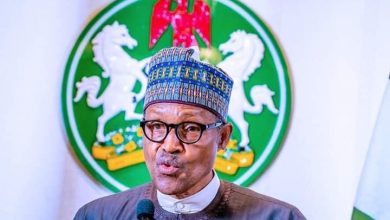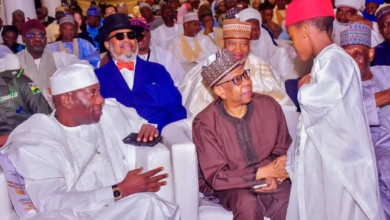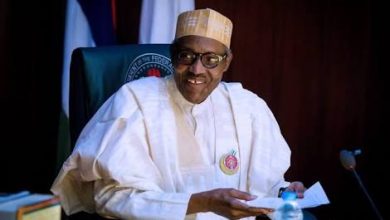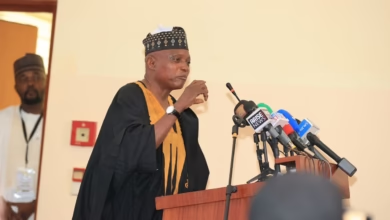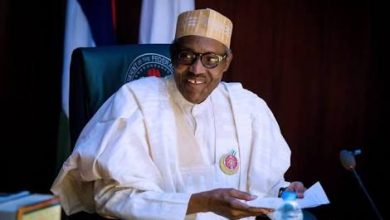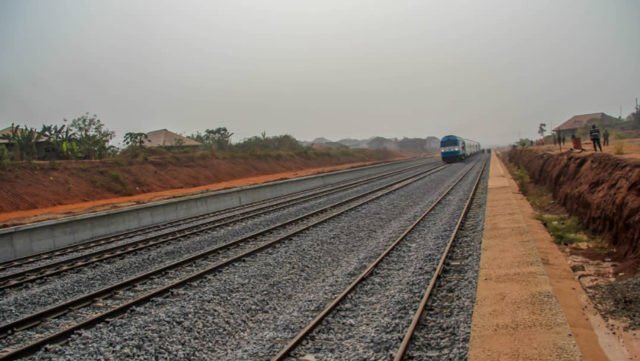
By Chukwudi Enekwechi, JP
At last the much-awaited eastern rail line has been flagged off by President Muhammadu Buhari, and from all indications the project will be completed in the life of this administration. Going by the information in the public domain, the project will create about 20,000 to 50,000 direct and indirect jobs. The provision of these jobs will also come with relevant skills acquisition for the citizens that will be involved. It is therefore significant that construction of the eastern rail line will stimulate the economy of the communities that straddle over 1000 kilometres of Port Harcourt to Maiduguri rail line. The rail line will also traverse thirteen states of the Federation including Rivers, Abia, Anambra, Ebonyi, Enugu, Benue, Nasarawa, Bauchi, Borno, Plateau, Akwa-Ibom, Cross River and Yobe.
As with most Nigerian projects, this one also raised a controversy as to the reason for a narrow gauge line instead of a standard gauge line, but we have come to learn that while $3.2 Billion Dollars will be needed to complete the project in record time, it will amount to chasing shadow seeking for about $14 Billion for a standard gauge rail line, especially when the major difference is only the speed. As a matter of fact a traveller using a narrow gauge arrives to his or her destination by only twenty minutes later than someone who travelled through a standard gauge rail line.
Furthermore, the essence of rail lines in any country is to bring about urbanisation, industrialisation, job creation and improve the trans modal transport system. The revitalisation of the Eastern rail line will also facilitate the logistics for the movement of natural resources both within and outside the country. For example, iron ore is found in large quantities in the North Eastern part of the country while coal, bitumen and chippings are also found in large quantities along the Enugu-Benue trough. The Eastern rail line will ease the transportation of these goods and services even to the high seas through the nation’s seaports.
Since the early 80’s there has been a near-total dilapidation of rail infrastructure in Nigeria and what you see across the country are the vestiges of colonial rail lines which were left to rot away without maintenance or rehabilitation by successive administrations. I recall with nostalgia the days gone by when I used to travel by rail from Enugu to Gudi in present day Nasarawa State en-route Abuja. Along the rail corridor there were intermittent stops at Eha-Amufu in Ebonyi State and other towns in Benue where we used to buy fast food, fruits, vegetables, yam and other necessities of life, but all these are gone with the decay in rail infrastructure.
Gladly, President Muhammadu Buhari came to office with a determination to restore the railway sector to its former glory, and that is the reason we are witnessing a serious and visible commitment to once again bequeath to Nigeria a rail system that brings economic benefits to the citizens of the country. There is no doubt that apart from facilitating the easy movement of goods and services, the rail lines will also enhance the creation of cottage industries with the attendant jobs for the local population along the corridor.
With the construction of the Eastern rail line, new businesses will spring up along the corridor and the country’s economy will greatly improve, considering that railways are known to stimulate the economic development of any country.
It is perhaps pertinent to state that under President Muhammadu Buhari, Nigeria is the only country in Africa developing standard gauge rail lines, and even India and South Africa are still using the narrow gauge rail system left by their colonial masters. The implication of this is that the choice of a narrow gauge system for the Eastern rail line is also to conform with the topography of the 1000 kilometres rail line from Port-Harcourt to Maiduguri. Experts have also made us to know that it is easier for trains to turn in bends and climb hilly areas with narrow gauge system, than the standard gauge.
Additionally, apart from the huge funds needed for the standard gauge which is about $14 Billion, it makes more economic sense to construct the narrow gauge line with about $3 Billion and still achieve the same objective. While the operational speed of the standard gauge rail line is 120 kilometres per hour, it is 100 kilometres for the narrow gauge and in this respect the difference in speed is quite infinitesimal and the cost stands at $3.2 Billion.
We must therefore commend President Muhammadu Buhari, Minister Rotimi Chibuike Amaechi and the leadership of Nigeria Railway Corporation led by Engr. Fidet Okhiria who have been using their expertise to crystallise the President’s vision of functional and modern railway system for Nigeria. Definitely posterity will judge them favourably and their names will be etched in golden colours when the story of provision of rail infrastructure will be penned by historians.

